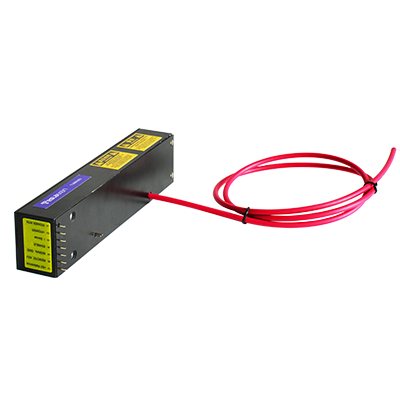Technical Research on High-Voltage DC Power Supplies in Microwave Processing
Microwave processing technology has been widely used in material synthesis, food processing, environmental governance and other fields due to its high efficiency, energy saving, and selective heating characteristics. As the core energy component of microwave systems, the performance of high-voltage DC power supplies directly affects the output stability, conversion efficiency, and system reliability of microwave energy. This article discusses the technical key points and research directions of high-voltage DC power supplies in microwave processing from the perspectives of technical principles, key parameter design, and application scenarios.
1. Coupling Mechanism Between High-Voltage DC Power Supplies and Microwave Processing
The core of microwave processing is converting electrical energy into microwave energy through microwave generators (such as magnetrons and klystrons). High-voltage DC power supplies provide stable DC high voltage for microwave generators, whose working principle is based on electromagnetic induction and power electronics conversion technology. Take the magnetron as an example: the high-voltage DC power supply must establish a strong electric field between the cathode and anode, enabling electrons to gain sufficient kinetic energy to bombard the anode resonant cavity and excite microwave oscillations. In this process, the ripple coefficient, dynamic response speed, and voltage regulation accuracy of the power supply directly determine the stability of the microwave field: excessive ripple may cause microwave frequency drift and affect processing uniformity; lagging dynamic response will lead to energy output fluctuations, especially in pulsed microwave processing scenarios, which may cause equipment overload.
2. Key Technical Design of High-Voltage DC Power Supplies
2.1 Highly Stable Topological Structure
To meet the stringent stability requirements of microwave processing, a two-stage architecture of front-stage PFC (power factor correction) + rear-stage LLC resonant converter is often adopted. The front-stage PFC circuit can improve the power factor on the power supply input side (≥0.99) and reduce harmonic pollution; the rear-stage LLC resonant converter reduces switching losses through soft switching technology while using the characteristics of the resonant cavity to achieve precise regulation of the output voltage. Additionally, introducing a digital PID control algorithm can dynamically optimize the power supply's voltage regulation rate (≤0.1%) and load regulation rate (≤0.5%), ensuring rapid stabilization during load mutations (such as changes in microwave load reflection coefficients).
2.2 Wide-Range Voltage Regulation and High-Efficiency Energy Conversion
Microwave processing scenarios often require adjusting microwave power according to material characteristics, so high-voltage DC power supplies must have wide-range voltage regulation capabilities (e.g., 0-30kV continuous adjustment). By using multi-winding transformers combined with tap switching technology or adopting cascaded H-bridge converter topologies, the voltage regulation range can be expanded while ensuring efficiency. Meanwhile, using wide-bandgap semiconductor devices such as SiC (silicon carbide) and GaN (gallium nitride) can increase power supply efficiency to over 95%, reducing heat loss under high-frequency conditions and extending equipment life.
2.3 Electromagnetic Compatibility and Reliability Design
High-voltage DC power supplies generate electromagnetic interference (EMI) during operation, which may affect signal transmission in microwave systems. By installing LC filter networks at the input and using partition isolation technology in power device layout, conducted and radiated interference can be effectively suppressed. Furthermore, overvoltage/overcurrent protection circuits, temperature sensors, and redundant power supply designs (such as parallel dual-power modules) are critical to improving system reliability, particularly in continuous industrial production scenarios, where the mean time between failures (MTBF) needs to exceed 100,000 hours.
3. Typical Application Scenarios and Technical Challenges
3.1 Material Synthesis
In microwave-assisted chemical vapor deposition (CVD), high-voltage DC power supplies must provide stable high voltage for plasma excitation while协同调控 (synergistically regulating) plasma density and energy distribution with the microwave field. Here, the power supply's fast pulse modulation capability (e.g., ns-level rise time) becomes critical to achieve precise control of nanomaterial growth processes.
3.2 Food Processing
Microwave sterilization processes require power supplies to maintain stable output across a wide temperature range (-20°C to 80°C) to adapt to different food material processing needs. Key technical challenges include capacitance drift of capacitor components in low-temperature environments and thermal failure of power devices in high-temperature environments, which can be addressed through temperature compensation algorithms and efficient thermal management solutions (such as micro-channel liquid cooling).
3.3 Environmental Governance
In microwave catalytic degradation of organic pollutants, high-voltage DC power supplies must work in conjunction with microwave reactors to optimize catalyst active sites by adjusting electric field strength. At present, multi-power supply synchronous control technology (phase error ≤1°) has become a research hotspot to achieve uniform energy distribution in large-scale array reactors.
4. Future Development Trends
With the development of microwave processing technology toward high-frequency bands (such as millimeter waves) and high-power density, high-voltage DC power supplies will exhibit the following trends:
Device Integration: Achieving miniaturization of power modules through 3D packaging technology to reduce the impact of parasitic parameters;
Intelligent Control: Introducing adaptive control algorithms and fault prediction models to enhance system self-diagnosis capabilities;
Green Design: Developing off-grid microwave processing power supply systems combined with renewable energy sources (such as solar and wind energy).




















